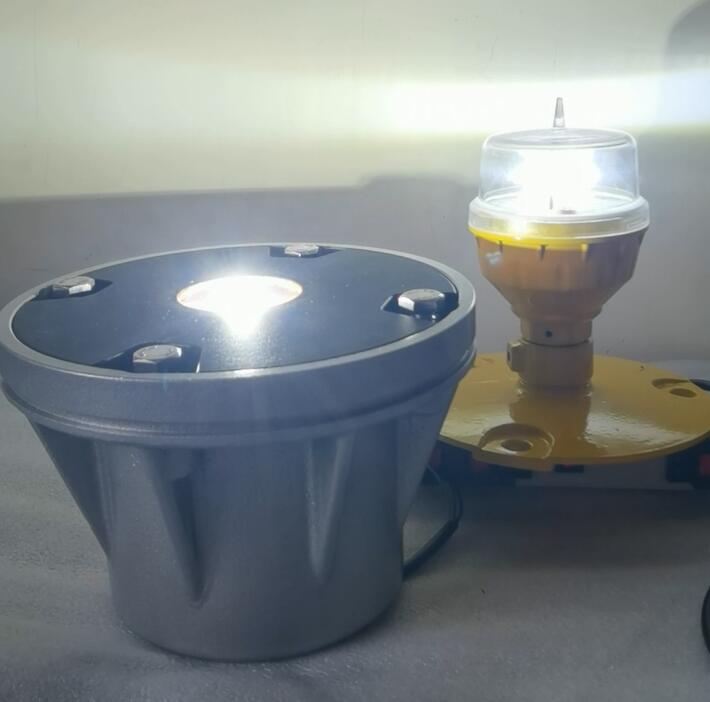
Helipad lights are a crucial component of helicopter landing zones, providing necessary illumination for safe takeoff, landing, and ground operations. These specialized lighting systems enhance visibility in low-light conditions, helping pilots navigate safely in urban environments, remote locations, and emergency situations. This article explores the key aspects of helipad lights, their types, benefits, and technological advancements.
Understanding Helipad Lights
Helipad lights are high-intensity lighting systems specifically designed to outline landing areas, guide pilots during approach and departure, and ensure compliance with aviation safety standards. They play a critical role in both civilian and military aviation, as well as in emergency medical services.
Types of Helipad Lights
There are different types of helipad lights, each serving a specific purpose:
1. Perimeter Lights
Perimeter lights define the edges of the helipad, ensuring clear visibility from the air. They are usually green or white and help pilots identify the landing zone from a distance.

2. FATO (Final Approach and Takeoff) Lights
These lights mark the final approach and takeoff area, providing additional guidance to pilots during critical phases of flight.
3. TLOF (Touchdown and Lift-Off) Lights
TLOF lights are placed around the touchdown area, offering precise illumination for helicopter pilots to safely land and take off.
4. Floodlights
Floodlights provide overall lighting for the helipad and surrounding areas, improving visibility for ground crews and medical personnel.
5. Obstruction Lights
These warning lights are installed on nearby obstacles such as buildings, towers, and antennas to prevent collisions during approach and departure.
Benefits of Advanced Helipad Lights
1. Enhanced Night Operations
Helipad lights allow helicopters to operate safely during nighttime and low-visibility conditions, increasing their availability for emergency and medical services.
|
helipad lights |
helipad light |
2. Improved Pilot Navigation
A well-lit helipad provides clear guidance for pilots, reducing the risk of misalignment or hard landings.
3. Increased Safety for Ground Crews
Proper lighting ensures the safety of ground crews, paramedics, and other personnel working around the helipad.
4. Energy Efficiency and Cost Savings
Modern LED helipad lights consume less power, offer longer lifespans, and require minimal maintenance, reducing overall operating costs.
Innovations in Helipad Lighting Technology
Recent advancements have introduced several innovative features in helipad lights, including:
Solar-Powered Helipad Lights: These lights offer a sustainable and cost-effective solution, especially in remote or off-grid locations.
Remote-Controlled Lighting Systems: Advanced systems allow operators to adjust light intensity, activate lights on demand, and monitor performance remotely.
Smart LED Systems: Intelligent LED lighting adapts to ambient conditions, enhancing visibility while minimizing energy consumption.
Best Practices for Maintaining Helipad Lights
To ensure optimal performance, helipad lights require regular inspection and maintenance. Key practices include:
Routine Inspections: Check bulbs, wiring, and mounting structures for wear and damage.
Lens Cleaning: Keep lenses clean to maximize brightness and visibility.
Timely Replacements: Replace aging lights before failure to maintain consistent performance.
Proper Installation: Ensure correct positioning and alignment to achieve optimal illumination.
The Future of Helipad Lights
As technology advances, helipad lighting systems are becoming more efficient and adaptable. Future developments may include automated lighting controls, improved durability, and better integration with aviation navigation systems to enhance overall flight safety.
Helipad lights are essential for safe and efficient helicopter operations. From traditional perimeter lights to modern LED and solar-powered solutions, these lighting systems continue to evolve, ensuring improved visibility, safety, and cost-effectiveness. As aviation technology progresses, helipad lights will play an even greater role in supporting emergency services, air ambulances, and urban air mobility solutions.